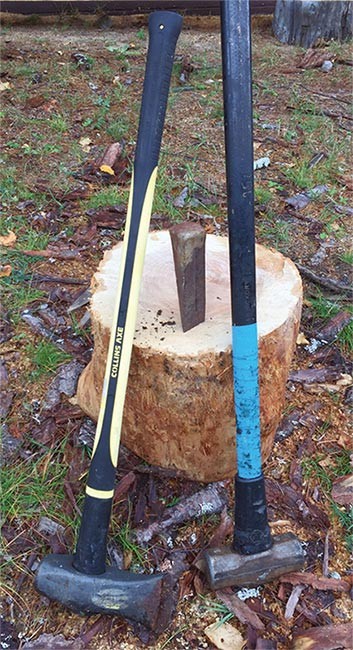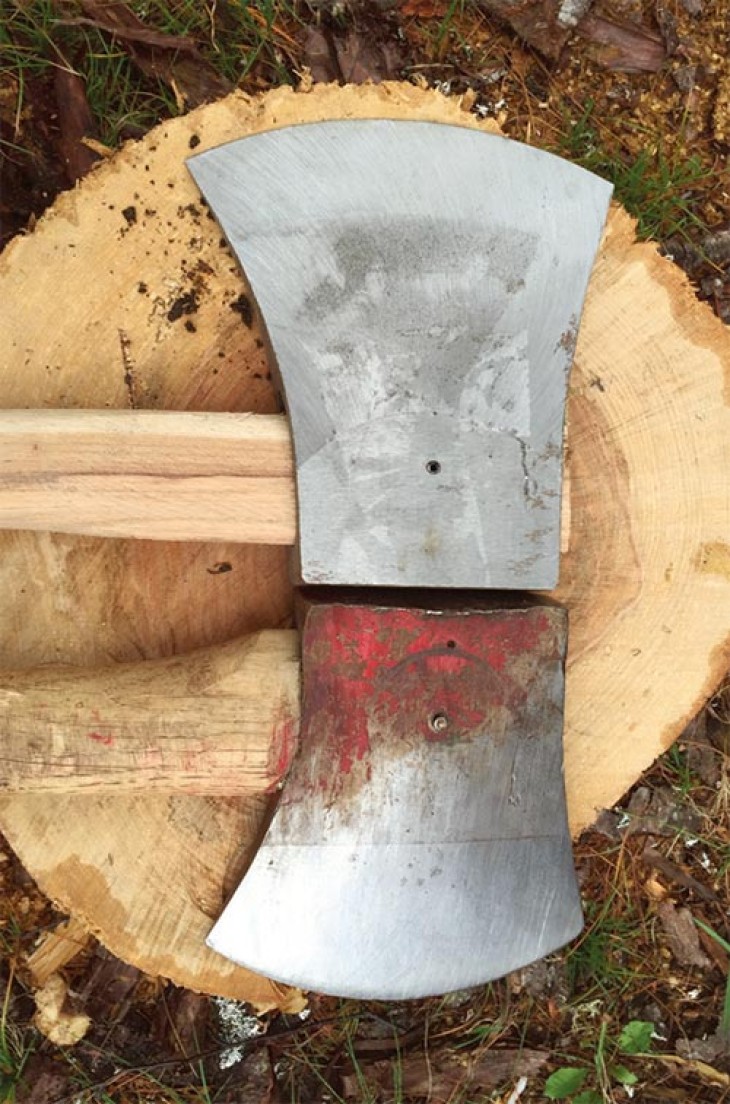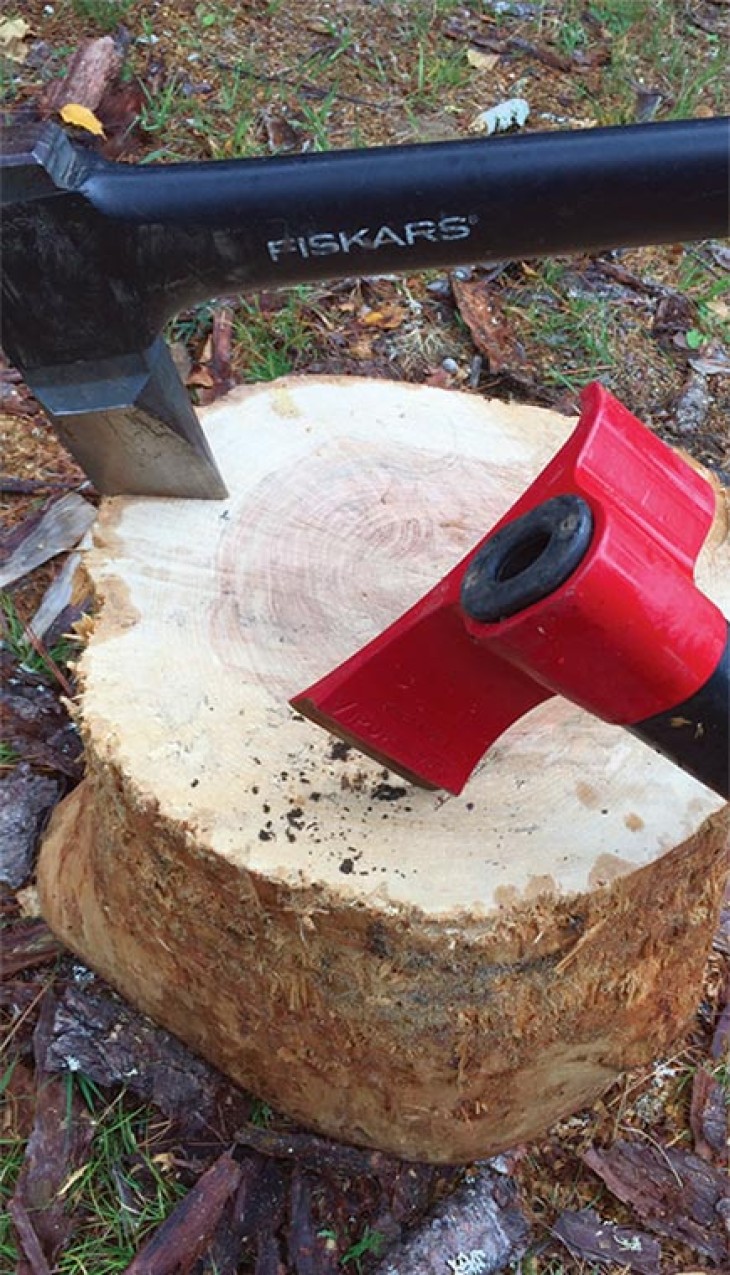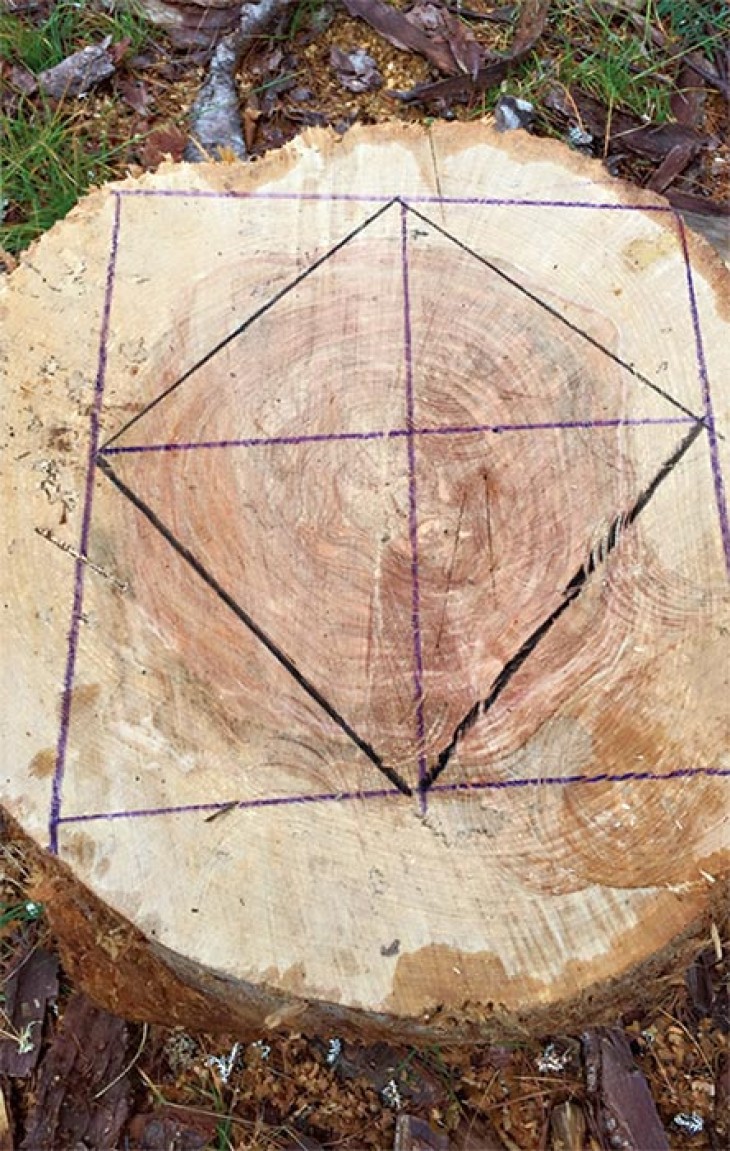I was recently in a big-box farm-supply store and saw a large sign that read, “Wood Chopping Headquarters.” What they meant, of course, was not chopping, but splitting. “Splitting” is what you do after the wood has been chopped, or bucked, and refers to cleaving the log with the grain.
Now that we’ve managed to clean up our lumberjack lingo, let’s take a look at some of the tools and techniques to boost productivity instead of perspiration. For those dedicated to splitting wood by hand, the tools can be roughly organized into three categories: splitting mauls and wedges, traditional axes, and modern hybrid splitting axes.
Splitting mauls (Image 1) would be great if you didn’t have to lift them. Typically weighing between 6 and 16 hefty pounds, mauls rely on their mass and thick wedge to pop apart blocks of wood. While I own a maul, it usually stays tucked in the barn, reserved for gnarly, knotted pieces that would swallow a smaller splitting axe. A cousin to the maul is the splitting wedge, which is indispensable when it comes to busting apart crotches and knotty whorls. Remember, the densest and most BTU-rich part of the log is where the knots are, so take the time to split these sections.
Traditionally, felling axes (Image 2) were larger than today’s hardware-store axes, often sporting a six-inch bit and weighing in around five pounds. Through use and abuse, the geometry of the axe’scutting edge changes as the bit is worn back to form a thicker edge more suitable to splitting than chopping. Importantly, these axes shouldn’t be filed sharp; instead, a blunt, thick edge is more durable and will resist chipping.
Over the last decade, several tool manufacturers have attempted to improve upon the traditional design of mauls and splitting axes. Among the most popular of these hybrids are the LeverAxe from Finnish company Vipukirves and the Fiskars X27 splitting axe (Image 3). The X27 has a narrow bit (reducing resistance) and a raised cheek that encourages the wood to pop apart. The LeverAxe, with its asymmetrical head, requires a loose grip, thereby allowing the axe to rotate and pry a slab of wood off with each blow.
Regardless of the tool you choose, a few tricks will help to make short work of your woodpile. First, if your block has knots closer to one end, place the knots on the bottom. This will allow you to get your split started in clear wood. Second, it’s easier to begin your split by striking the edge of the log, not the center. Most people stand too close to the wood, which leads to striking the block in the center, or even worse, over-extending the axe and striking the handle on the log. Finally, for large or particularly difficult logs, consider using the corner-slabbing method (Image 4), a slightly more time-consuming yet ultimately more effective means of opening up even the most stubborn pieces.





